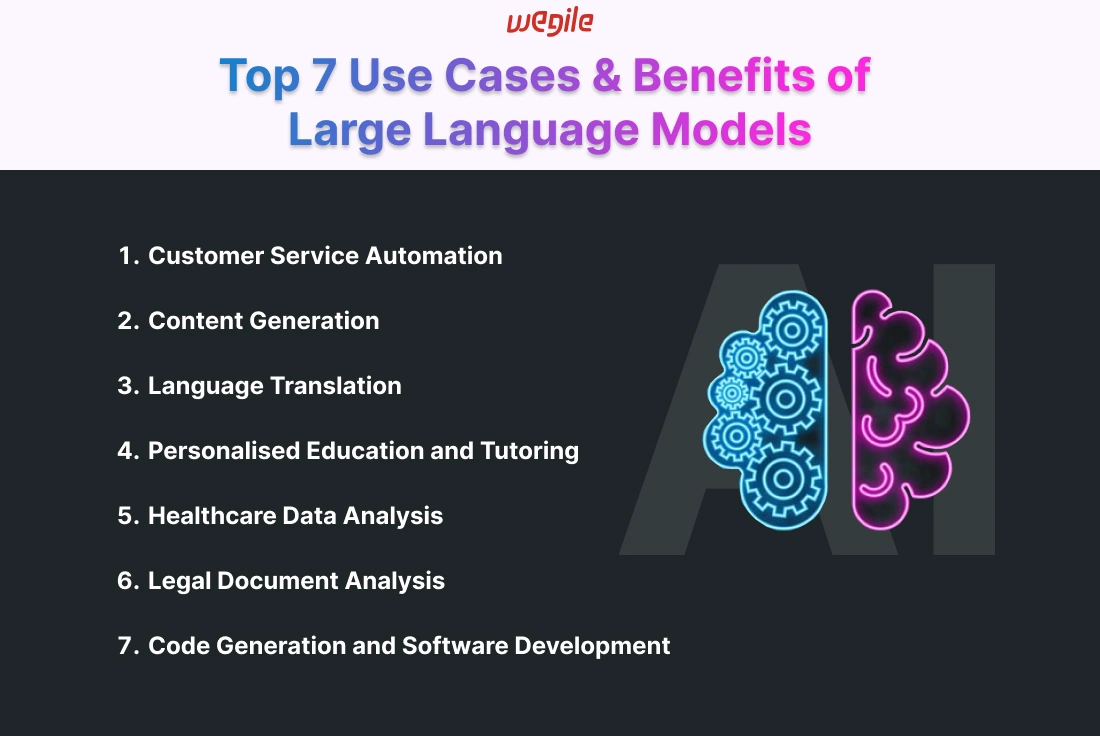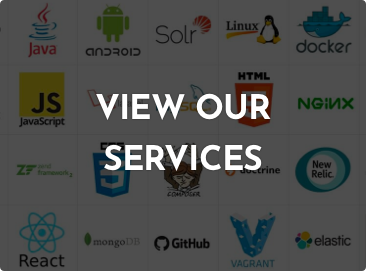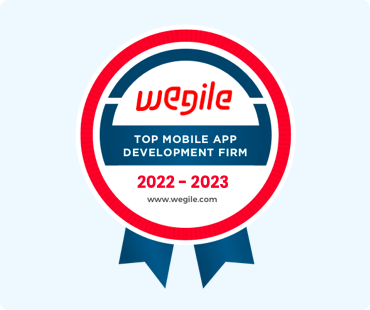Large Language Models (LLMs) are taking shape as a revolutionary force in the AI domain. They are reshaping how businesses and developers extensively use technology to enrich user experiences and streamline operations. Right from crafting compelling marketing content to powering sophisticated chatbots, LLMs are at the main door of AI modification.
This comprehensive guide to LLM Integration goes deep into how these powerful models are integrated into various systems. It will unveil their potential to level up mundane tasks into dynamic and intelligent workflows.
As businesses strive to stay competitive and innovative, comprehending and implementing LLM integration is becoming pretty crucial. No matter if you're a seasoned developer, a business strategist, or simply an AI enthusiast, our guide brings mindful insights into the mechanics, benefits, and complications of incorporating these advanced models into your projects.
Ready to get the full potential of LLMs in your applications? Keep reading our blog for a deep plunge into the world of Large Language Models and learn how to utilize their tremendous power for your technology solutions.
Large Language Models (LLMs) are advanced artificial intelligence systems that process and curate human-like text based on vast amounts of comprehensive data sets they have been trained on. The top large language models are GPT-3, GPT-2, BERT, T5, and RoBERTa. LLMs are fundamental blocks of use cases of generative AI.
LLM models use deep learning techniques and specifically a structure of neural networks known as transformers. They help them understand the nuances of language and context. The training involves feeding the models with a large corpus of text data. It enables them to learn grammar, syntax, semantics, and the context within text conversations or documents.
Understanding Context: LLMs excel in grasping the context of a conversation or text sequence. It allows them to produce relevant and coherent responses.
Text Generation: These models can generate text that mimics human writing styles. They are useful in applications like content creation, chatbots, and more.
Scalability: LLMs can digest and generate responses from short tweets to lengthy articles. It demonstrates versatility across different text lengths and complexities.
LLM Integration refers to the procedure of embedding Large Language Models into existing systems, applications, and workflows. It helps enrich their capabilities or automate certain functions. This integration helps businesses and developers use the advanced language processing power of LLMs to improve user experience, increase efficiency, and bring in new services. LLM integration also formulates the building blocks of AI and Generative AI tools.
Here is a brief overview of how LLM models or their integration works:
APIs: Most integrations take place through APIs or Application Programming Interfaces. Here, the LLM is hosted on a server and other applications interact with it through HTTP requests.
Embedding: In some cases, models may be embedded right into applications, especially for offline usage or times when response times are critical.
Customization: Depending on the use case, the model might be fine-tuned with specific data relevant to a specific business or industry to enrich performance and relevance.

Use Case: LLMs are extensively used in customer service to power chatbots and virtual assistants. LLM-driven generative AI and AI systems can handle inquiries, and solve common problems. They also provide 24/7 customer support without human intervention.
Benefits: Customer service automation by LLMs reduces operational costs. It results in increasing customer satisfaction through instant responses and freeing human agents to deal with more complicated issues.
Use Case: Right from writing articles to creating marketing copy, LLMs can generate readable and engaging content across various topics. Publishers, marketing teams, and content creators utilize LLMs to draft content, brainstorm ideas, and even compose entire articles.
Benefits: Content generation supports enriching creative processes which speed up content production. It also provides content scalability without compromising quality.
Use Case: LLMs are employed to provide real-time translation services. They can translate text and speech between multiple languages with immense precision and accuracy.
Benefits: Language translation supports facilitating international business operations which enhances communication in multilingual communities. It also aids in making information more accessible across language barriers.
Use Case: LLMs can be tailored to create personalized learning experiences and tutoring systems. They can adapt to a student's learning pace and style by providing explanations, supplementary materials, and interactive learning sessions.
Benefits: The tint of personalization in the education sector by LLMs helps in improving student engagement and understanding, offering scalable educational tools. It also assists in traditional classroom settings.
Use Case: In healthcare, LLMs analyze patient data, medical notes, plus research papers to help with diagnosis and treatment plans. They can outline patient histories and suggest treatment protocols relying on current medical knowledge.
Benefits: This application helps in increasing the accuracy of diagnoses. It also facilitates reducing the time doctors spend on paperwork and provides personalized patient care.
Use Case: LLMs can go through extensive legal documents to assist in due diligence and contract analysis. They also streamline and simplify the litigation processes. They support in determining relevant information quickly and delivering summaries or insights into large volumes of text.
Benefits: Legal Document Analysis by LLM aids in streamlining legal operations which lessens the workload on legal professionals and cuts the time and cost associated with legal research.
Use Case: LLM-based solutions specifically GitHub’s Copilot assist programmers by suggesting code snippets. It supports debugging existing code and even writing entire routines based on brief descriptions of functionality.
Benefits: This use case helps in increasing development speed. It reduces bugs and enhances code quality by leveraging the model's understanding of programming patterns and practices.
Integrating Large Language Models (LLMs) into your business can enrich operations and intensify customer interactions. It also levels up decision-making processes. Here’s a step-by-step guide on how to integrate LLMs into your business with an impact:
Start by specifying the specific areas in your business where LLMs can add value. Common use cases are customer support chatbots and automated content generation. It also includes data analysis and personalized marketing. Specify the objectives and expected outcomes for each use case to ensure alignment with your business goals.
Go with a Large Language Model that matches well with your business requirements. Go with factors such as model size, capabilities, and cost. For example, GPT-4 is suitable for generating human-like text and smaller models like GPT-3 could be more cost-effective for easier tasks. Evaluate the trade-offs between performance and resource consumption to get the best fit.
Data is crucial for the impactful use of LLMs. Compile and preprocess your business-specific data by ensuring that it is clean and relevant. It should also be representative of the tasks at hand. If you're planning to fine-tune an LLM for a specific application, make sure the data is labeled accurately and formatted perfectly for training.
Fine-tuning an LLM on your business-specific data authorizes it to conduct more accurately in your specific context. This step involves training the model on your data by adjusting hyperparameters. It should also include iterating until the desired performance is achieved. Fine-tuning makes sure the LLM understands your business’s unique language, terminology, and customer interactions.
Once the model is fine-tuned, combine it with your existing business applications. It could include embedding the LLM into customer support platforms and content management systems. It also involves implanting the models into marketing automation tools. Use APIs to connect the LLM with your software infrastructure to facilitate seamless communication between systems.
Continuous monitoring is essential to guarantee the LLM performs as expected. Go with logging and analytics to track the LLM’s output and user interactions. Also, use LLM for performance metrics. Regularly study these metrics to determine any issues or areas for improvement. Quality control measures which include human-in-the-loop processes can further help promote high standards and correct any errors the LLM may produce.
You should use LLMs ethically and in compliance with relevant regulations. Make sure that your LLM deployment respects user privacy. Also, avoid generating biased or harmful content and comply stringently with data protection laws. Regularly study and update your policies and practices to match with the latest guidelines and best practices.
With the business growth and expansion, the demand for your LLM also increases. Revamp the model for scalability by using techniques such as model compression , caching , and load balancing. Try to use cloud-based solutions to supervise the increased computational load and ensure the LLM continues to perform efficiently as usage scales.
The incorporation of LLMs is not a one-time task but an ongoing process. Constantly collect feedback and retrain the model with new data. Keep updating the system to keep up with expanding business needs and technological advancements. Regular updates and improvements will help strengthen the effectiveness and relevance of the LLM in your business.
Challenge: Large Language Models (LLMs) are trained on massive datasets that often include biased or low-quality data. This can lead to the model generating biased or inappropriate responses.
Solution: To cut bias, make sure the training data is diverse and representative of different demographics and perspectives. Regularly audit and filter training data to remove biased content. Implement post-processing techniques and human-in-the-loop evaluations to recognize and rectify biased outputs.
Challenge: Training and fine-tuning LLMs need significant computational resources which makes it expensive and resource-intensive.
Solution: Optimize the training process by utilizing pre-trained models and applying techniques like transfer learning to cut the computational load. Leverage cloud-based GPU/TPU services that present scalable resources and explore model compression techniques to reduce the model's size without sacrificing performance.
Challenge: LLMs can struggle to maintain context over long conversations which results in incoherent or irrelevant responses.
Solution: Implement techniques such as attention mechanisms and memory-augmented models to assist the LLM retain context over extended dialogues. Plus, fine-tune the model with datasets specifically designed for long-form conversations to boost its power to maintain contextual continuity.
Challenge: LLMs may develop harmful or inappropriate content which raises ethical concerns, especially in open-domain chat applications.
Solution: Use robust content moderation filters and ethical guidelines in the LLM’s deployment. Regularly update the model with safe and moderated datasets. Also, engage with human moderators to assess and improve the model’s responses by making sure that they sync well with ethical standards.
Challenge: Deploying LLMs in real-time applications, especially in customer service chatbots can be pretty challenging due to latency and scalability issues.
Solution: Use optimized inference techniques such as model distillation and quantization to improve real-time performance. Go with load balancing and distributed computing strategies to manage high traffic efficiently. Plus, consider using smaller and more impactful versions of LLMs for real-time applications where speed is crucial.
The integration of Large Language Models into your systems isn't just a technological upgrade but a smart and strategic investment that can redefine how you engage with users and manage data. The versatility and capability of LLMs to level up and personalize user interactions make them an indispensable tool in the modern AI landscape. As you look to implement these powerful models, don’t forget that the journey is as critical as the destination.
For those ready to take the next step and incorporate this powerful technology into your projects, explore Wegile’s generative AI app development services. They are your ultimate gateway to unlocking new opportunities. By partnering with experts in the field, you can tailor AI solutions that not only fulfill your present needs but also scale for future demands. Our team of experts is ready to help you integrate powerful Large Language Models into your applications. We will ensure you stay ahead in the competitive digital landscape. Don’t miss out on the opportunity to modernize your operations and enhance user engagement with advanced AI capabilities.
Welcome the power of Large Language Models with us and see how they can upgrade your applications into more smart, powerful, and user-friendly platforms.


 Browse Our Services
Browse Our Services
